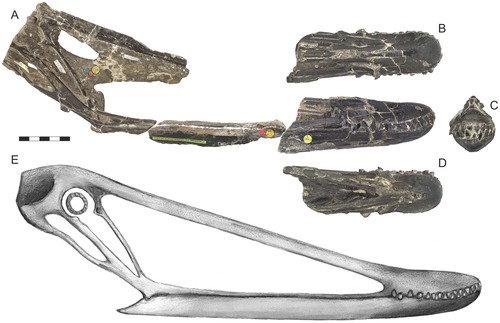article for July 11, 2019
 Article of the day for July 11, 2019 is Istiodactylus.
Article of the day for July 11, 2019 is Istiodactylus.Istiodactylus was a pterosaur that lived during the Early Cretaceous. The first fossil of the genus was discovered on the Isle of Wight in England. More specimens were later found, including a species from China, I. sinensis, which possibly belongs to a different genus. Istiodactylus (from Greek for "sail finger") was a large pterosaur; estimates of its wingspan range from 4.3 to 5 metres (14 to 16 ft) long. Its skull was about 45 centimetres (18 in) long, and was relatively short and broad for a pterosaur. The front of the snout was low and blunt, and bore a semicircle of 48 interlocked teeth. It had very large forelimbs, with a wing-membrane distended by a long wing-finger, but the hindlimbs were very short. It was a scavenger that may have used its distinctive teeth to sever morsels from large carcasses. The wings may have been adapted for soaring, which would have helped it find carcasses. Istiodactylus is known from the Wessex Formation and the younger Vectis Formation.
Comments
Post a Comment